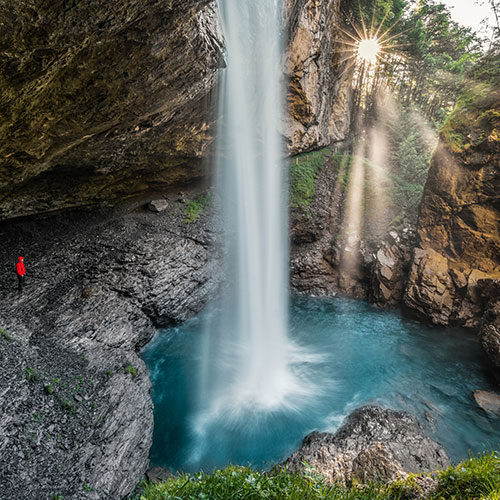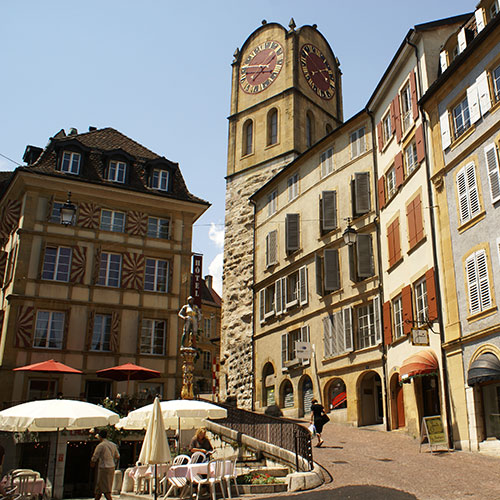
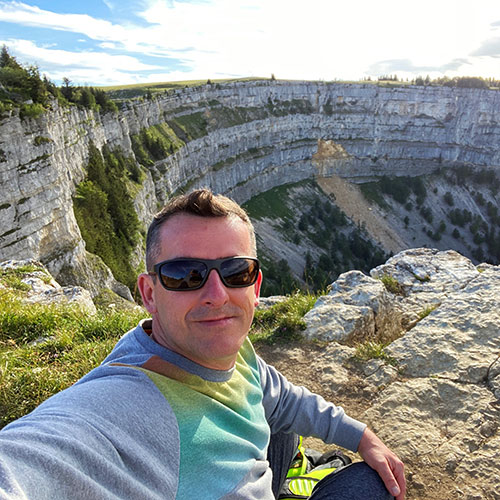
Sights and monuments by city and region to visit in Switzerland
Here is a presentation of the most beautiful cities and regions of Switzerland, by themes and with their main highlights, as well as links to deepen and prepare your vacations.
Our partner for Switzerland, the Geneva agency Illico Travel can organize your trip, with guided tours of the cities or a personalized travel with transport and hotels. Gianna and her team will be able to offer you their services according to your needs.
Geneva Lausanne Neuchâtel French-speaking Switzerland by city and themes German-speaking Switzerland by city and themes
Geneva : Cosmopolitan city & best quality of life
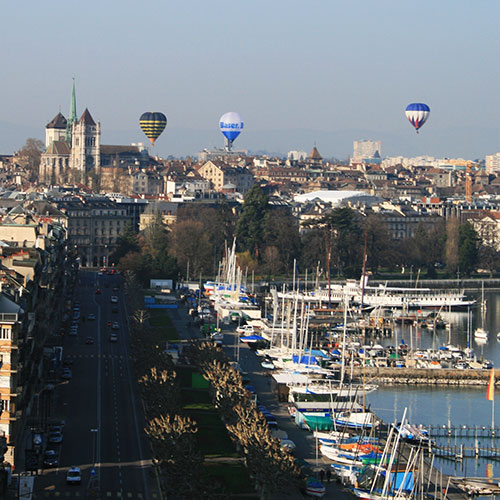
Preserved nature, presence of big international organizations, world center of private bancs, world capital of watch making and of… cigars: the smallest of the big metropolis remains , despite these privileges, humble and discrete and will not miss to charm you. Geneva will surprise you with its thousands of facets: exclusive, creative, serene, sportive, food-fund, international city, third biggest vine producer of Switzerland, standing between modernity and tradition. Geneva is a town open to the world, often on top of the grading of cities with the best quality of life.
For an original discovery on the arm of a Genevan, to meet the classic and unusual Geneva, we strongly recommend you to call upon the tourist guides of the Illico Travel agency, our partner for all Switzerland and which by its Geneva origin, is the specialist for all guided tours or the organization of events for companies and travel program for groups (hotels, restaurants, culture) in Geneva.
Photos of Geneva are from © Genève Tourisme
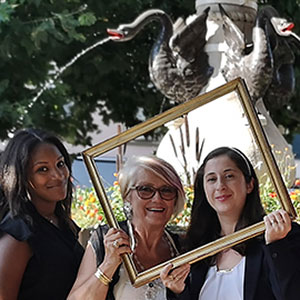
City guided tour of Geneva
Illico Travel, as a specialist of guided tours in Geneva, offers you many thematic tours or simply a beautiful and original visit of the city's must-see places: International organizations, the lake shores, the magnificent parks, the Old City with its narrow streets full of history and its flowered squares (on foot or by car).
Information & Reservations on the page "Guided City Tour"
Historic monuments in Geneva

The Bay and Lake Geneva
The first on the list of places to be seen is the beautiful bay of Geneva: the lungs of Geneva, a place of leisure and strolling, of meeting people from the whole world with the water fountain on the background. In the park called the English Garden (Jardin Anglais) on the left bank, don’t miss the flower clock, symbol of the international reputation of Geneva as the world capital of luxury watch making. The English Garden is only one of the over fifty parks of Geneva, 2 nd greenest city of Europe. On the right bank, the statue of the Sissi, empress of Austria and Hungary, assassinated on this quay in 1898.

The water fountain of Geneva
Together with the Lucerne Bridge and the Matterhorn, the Geneva Jet d'eau is undoubtedly one of the most photographed places in Switzerland. Although it started as a safety valve of the Coulouvrenière pumping station, very quickly this water fountain became the symbol of Geneva. Was installed in 1891 and is thus one of the most ancient monumental fountains of the world, reaching a height of 140 meters. It has become the landmark of Geneva. It is switched on every day of the year from 10h to 23h (at night with lighting) except when the winds are too strong or the temperatures below +2 C°.
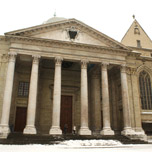
Saint-Peter Cathedral
The Saint-Peter Cathedral has been erected between 1160 and 1250 as a catholic church, but is a protestant church since Geneva had adopted the Reformation in 1536. The inside deserves a visit, be it only for the contrast between the bare cathedral and the corps chapel. A surprise. The chair of Calvin is on the way to the north tower, which offers an exceptional view on Geneva… after 152 steps of a narrow staircase.

Monument of the Reformators
This monument 100 meters long was built by a private foundation between 1909 and 1919 to mark the 400th anniversary of Calvin and the 350th anniversary of his Academy. It stands in the park des Bastions and tells the story of the Reformation in Geneva and its international influence. Visit the Reformation Museum to learn more about this important chapter of Geneva's history.
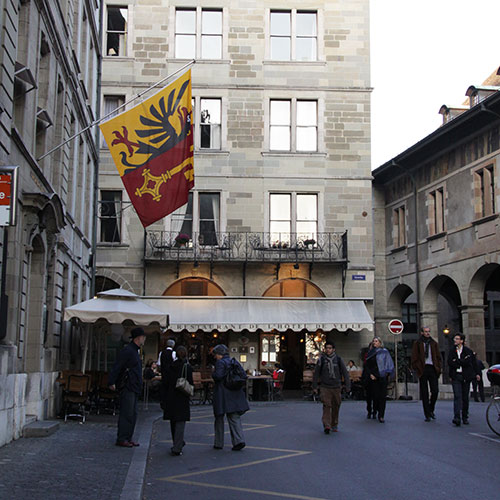
City Hall of Geneva
The City Hall is an architectural complex built through the 15 C -18 C. The Parliament of Geneva sits in the building. On the ground floor, the Alabama room where the first Geneva Convention (Red Cross convention) was signed in 1864. The first international court of arbitration has also taken place here in 1872. It set an end to the conflict between the USA and the UK after the American civil war.

Bains des Pâquis
The "Bains de Pâquis" (baths) is a very typical place and the most ancient beach of Geneva. It offers the best view on the bay, the lake and the daily birth of the fountain. In winter, an excellent address for a cheese fondue. It is one of the most unusual, eclectic, cosmopolitan, popular and yet smart places in town . You will love it.

Other places worth seeing
In addition to the most important sites mentioned above, Geneva offers many other places of great interest.
Square Bourg-de-Four : Heart of the Old Town, this is where Geneva began around 500 b. C. It is still today one of the places where the Genevese meet for having a drink together… since 2500 years non-stop.
On the Promenade de la Treille you can sit on the longest wooden bench of the world and admire the official chestnut tree announcing spring every year since 1818.
At the foot of the Old Town, the place Neuve is a cultural centre with the Opera, the Music Conservatoryand the Museum Rath. Around the corner, on the Plaine de Plainpalais, you will find the flea market on Wednesdays and Saturdays.
Among the numerous green areas of the city, don’t miss the 5 parks on the right bank starting from the Perle du Lac to the botanical garden. In the part of Geneva called Jonction you can admire the merging of the river Rhone and its blue water with the milky water of the river Arve. Geneva holds a great number of architectural jewels such as the de Clarté glass buildingof Le Corbusier of 1932, the “Smurfs” buildings behind theCornavin main train station in the district Les Grottes.
The Victoria Hall is still a famous place for classical music, erected 1894 in a superb neo-rococo style by Sir Barton, British consul of Geneva. He dedicated it to her majesty the queen Victoria and… to his wife, named also Victoria. The Russian orthodox church built in 1866 in a Russian muscovite style, the catholic basilica Notre Dame of 1859 (near to the train station), the Synagogue of 1859 and the Mosque with a minaret of 1974.
We invite you to visit the page “guided tours” of our local partner Illico Travel, who can offer you interesting tours – for individuals, families or groups.
Historic monuments in Lausanne et région

Cathedral of Lausanne
Dominating the city of Lausanne on the Hill of the City, the Cathedral is recognized as one of the most remarkable Gothic buildings in Switzerland, due to the existence of a polychrome statuary ensemble of first importance, the "Painted Portal". Also on the southern part of the transept, you can admire the Rose and its 105 medallions. From the first stage of construction, the eastern part, the chevet includes Romanesque elements. You should know that the new 40-ton organ inaugurated in 2003 with its 7000 pipes has an exceptional acoustics allowing to play different musical styles from Baroque to classical through symphonic. - Photo: © LT/www.diapo.ch

City Hall of Lausanne
The City Hall built between 1673 and 1675 by Abraham de Crousaz was surrounded by two rivers, the Flon and the Louve. The place where it is located, the Palud, has an etymology similar to malaria reminding us that this region of Lausanne was swampy. The Town Hall as the center of Lausanne life combined three functions, administrative and political, economic with a market hall on the first floor and defense with the belfry and the bell tower that warned of the dangers. During your visit to Lausanne, you will be able to admire what is recognized as the most beautiful 17th century building in the Canton of Vaud. - Photo: © LT/www.diapo.ch
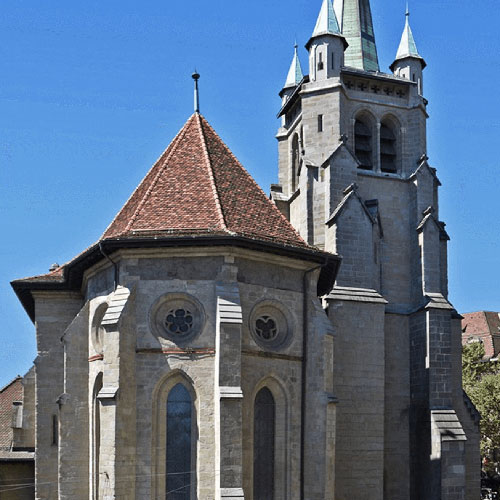
Church of St. Francis
Together with the Cathedral, the Church of St. Francis is the only Gothic church that has survived to the present day. Built around 1270, the church was part of the Franciscan convent built in the new southern limit of the medieval enclosure, which was moved on this occasion to the axis of the church's choir, giving the choir its four particular sides and a corner instead of a face. After the city fire in 1368, the nave was restored and a new bell tower was built. The modern stained glass windows are by artists Cingria, Heaton and Biéler. In 1536 with the Reformation, the church was attached to the Protestant Parish. With the strong urban development of the city around 1900, the other buildings of the convent were destroyed. - Photo: © www.sainf.ch
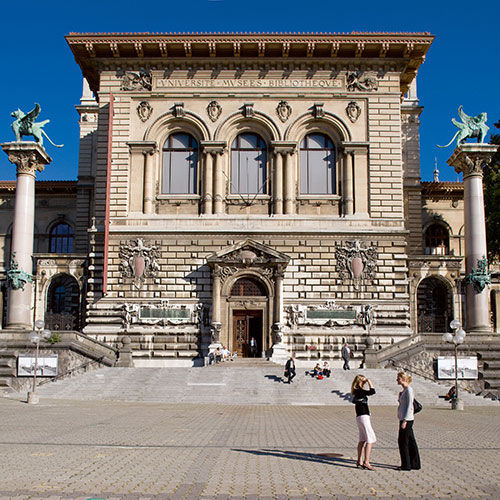
Palais de Rumine
In 1871, Gabriel de Rumine, an aristocrat of Russian origin and Lausanne by his mother, bequeathed to the City of Lausanne the sum of 1,500,000 francs for the construction of a public utility building. The Florentine renaissance style of this building, inaugurated in 1906, an allusion to the cradle of universalist humanism, is the result of its encyclopedic ambitions: general service of the Academy, aula, learned societies, technical faculty, library and no less than five museums are housed on the site. The Palais de Rumine still houses the cantonal museums of fine arts, geology, archaeology and history, the Cantonal Monetary Museum as well as the Cantonal and University Library. - Photo: © Christof Schuerpf
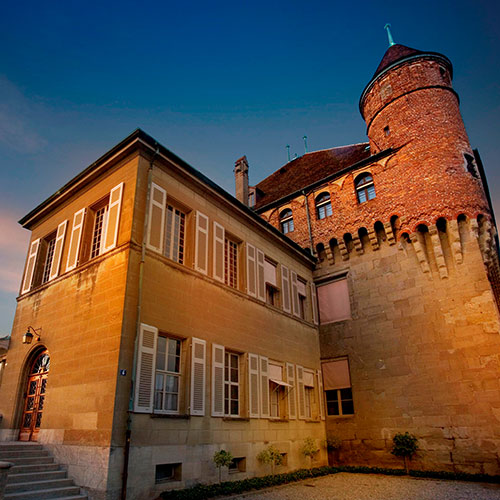
Other places to discover in Lausanne
The Castle Saint-Maire : This castle, which has been the seat of the Waldensian government since 1803, was initially the new residence of the bishopric of Lausanne before being used by the Bernese since 1536. The bishops of Lausanne had the castle built between 1400 and 1431 at the end of the hill of the city the furthest from the lower town, i.e. the farthest from the people and the urban unrest. The style of this massive building typical of urban castles is dominated by its brickwork, crenellations and indented merlons, a construction with an Italian influence and not without reason. Bishop William of Challant, who was originally from Valle d'Aosta, certainly called upon Italian masters for the construction of this castle, which evokes the fortress of Verona. Photo: © LT/Muris Camo
The Old Bishopric : Before the construction of the Castle Saint-Maire, this palace erected from the 11th century was the residence of the bishops of Lausanne. It overlooked the lower city from the esplanade of the Cathedral on the edge of the City Hill. This building, which today houses the Historical Museum of Lausanne, was built and modified over several centuries; the oldest part is the south-western flank, the Jacquemard tower which participated in the defense of the City dates from the end of the 14th century and the brick building with its crenellation similar to the castle of Saint-Maire is from the same period as the latter, i.e. from the beginning of the 15th century. The former bishopric underwent several reconstructions and renovations from the 18th century.
The Market Stairs : From the Hill of the City and the Cathedral, you can take the Market Stairs to go to the Place de la Palud. This part of Lausanne is one of the most picturesque parts of the city. From the bottom of the stairs, you will particularly appreciate the wooden stairs, the old buildings and the extension of the perspective with the tower of the Cathedral. The existence of the market stairs is attested since the 13th century and the current covered version dates back to the 1717s and some parts (around n°17) even to the 16th century. Until the 14th century, the old market was located below the rue Pierre-Viret.
Neuchâtel, between lake and mountains; A town, a canton, a country!

Neuchâtel certainly does not rank among the top Swiss tourist hotspots, like Geneva, Zurich or Lucerne. Still, Neuchâtel is a region of astonishing beauty, with numerous attractive cultural and natural sites. Moreover, it offers variety and excellent tourist facilities. We have chosen to include this town with only 32,000 inhabitants in our information platform for two reasons. First of all, it has been our intention, ever since the launch of LatLon-Europe’s first website, not to restrict ourselves to presenting well-known major destinations. So, we also introduce smaller cities which are not less interesting and deserve more attention, as they all offer the opportunity to spend a perfect holiday.
Secondly, the owner of the website, Pascal Jeanrenaud, is Neuchâtel born and bred – and convinced that his hometown and its magnificent surroundings are a real find for tourists. As Pascal has come to appreciate the charms of Neuchâtel even more since he left to live in Berlin, he now wants you to discover them.

City guided tour of Neuchâtel
Our partner for Switzerland Illico Travel offers guided tours in the city of Neuchâtel or can program your group trip in French-speaking Switzerland with the visit of the main tourist sites and cultural wonders according to your needs. Please contact Gianna Loredan and her team, specifying your wishes, for a private guided tour or a more substantial program.
Information & Reservations on the page "Guided City Tour"
Historic monuments in Neuchâtel

Neuchâtel Castle
Located on a hill overlooking the town of Neuchâtel, the castle is the seat of the canton administration and one of the major sights in the region. If you follow the steep street (Rue du Chateau) and stairs that lead up to it, you will find yourself facing the southern castle walls, in front of the triple-jettied “Phillip of Hochberg” gallery that was erected upon an extension of the curtain wall. Under the windows, the coats of arms of 12 cantons of the Old Swiss Confederacy are displayed, as this part of the castle was built in the 16 th century when they occupied Neuchâtel for some years. Visitors can follow a circuit through the castle grounds (accessible to the public from Rue de la Collégiale) which first leads to the western part – a rare example medieval profane architecture in Switzerland. The castle consists of numerous parts, built from the 12 th to the 19 th century (some elements, like the foundation of the Prison Tower, are probably even older).
You can take part in a tour of the castle (5 CHF cash). You can find the schedule here and the tours start under the castle porch.

Collegiate Church and the Cenotaph
As the church gives an impressive testimony of the transition from Romanesque style, manifest in elements like the column capitals, to Gothic style, experts reckon that the construction of the church proceeded slowly, stretching from the end of the 12 th (three Romanesque apses from 1185) until the middle of the 13 th century (transept and ribbed vault). The Collegiate Church was consecrated in 1276. Another remarkable feature is the South gate, guarded by St. Peter and St. Paul. The upper part of the church tower was rebuilt in 1868, but the base is of Romanesque origin.
Composed of the Greek words “kenos” (empty) and “taphos” (tomb), a cenotaph of the Collegiate Church would be an empty tomb; in fact, it is a kind of memorial depicting a group of people, carved in stone and painted. It was commissioned by Count Louis in 1372 in honor of his parents and other members of his entourage. The recumbent figures whose heads rest on stone pillows are Count Louis’ parents (Count Roland of Neuchâtel and Eleanor of Savoy), probably the occupants of a former tomb at this site.
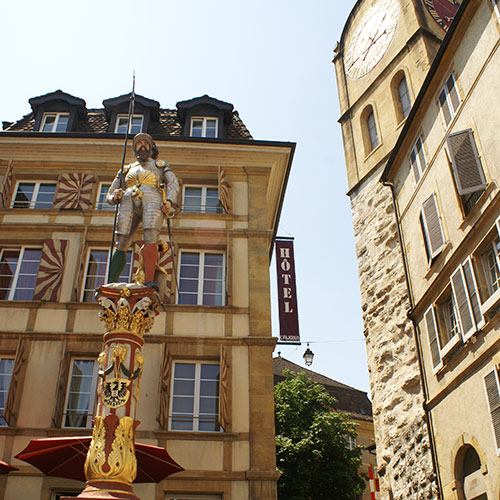
Banneret Fountain and Diesse Tower
Originally, the Banneret Fountain was the oldest existing well outside the primitive town fortifications (of which Diesse Tower is a remnant) used for watering horses and cattle. In 1581 it was redesigned by Laurent Perrenoud as we see it today. The figures are painted in a polychrome style that is very typical of Renaissance sculpture. The figures of the banneret and Justice as well as the market hall (Maison des Halles) are works of Perrenoud. At this location you will find the organic coffee shop and hotel of "Aubier" that we recommend for your stay.
Other Renaissance fountains in Neuchâtel : - The Justice fountain (1547) on Rue de l'Hôpital - The Griffin Fountain (1668) on Rue du Château
And also the fountains on Rue des Boucheries and on Rue du Neubourg.
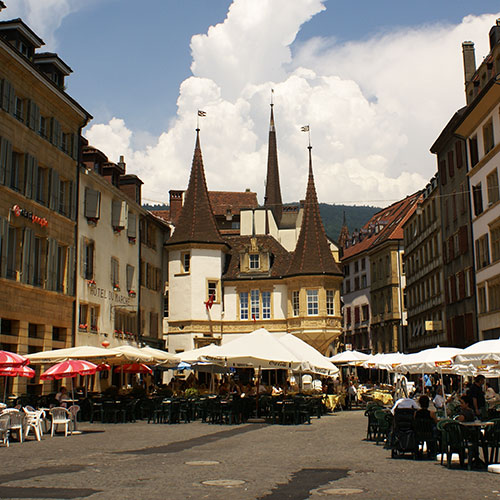
Market Square and the Maison des Halles
Once the farmers coming from the cantons of Berne, Vaud and Fribourg to sell fruit and vegetable in Neuchâtel (where they were called "marmets") could get by boat directly to the marketplace, which then lay on the lakeside. Today, the colorful market (especially on Tuesdays and Saturdays) is a good place to enjoy delicate fragrances and pristine flavors, to try and buy local products. Or simply watch the locals do their shopping or relax one of the finest terraces of town. The most gracious building of the old town doubtlessly is the market hall, Maison des Halles. Around 1570, Laurent Perrenoud built this architectural gem on ground won from the lake as a warehouse. The most valuable market goods were stored here – on the first floor, cereals and, on the second, cloth, drapery and Indian fabrics. Don’t miss to admire the details of the façade, e.g. the coat of arms of the Orléans-Longueville.

Pier and Port of Neuchâtel
The history of Neuchâtel is closely linked with the lake, which has always been an invitation to establish commercial contacts across its waters, but at the same time put a barrier to the growth of the town, situated at the foot of the Jura mountain range. Since the Middle Ages, Neuchâtel has won territory from the lake, the town center moving ever further away from the lakeshore. Today, the new riparian areas contribute to Neuchâtel’s quality of life offering space for relaxation and recreation, like walking or cycling (Quai Ostervald), and cultural events, besides several new beaches – the immensely popular Jeunes Rives.
The port of Neuchâtel was relocated and its facilities modified several times, due to the expanding town as well as to the Jura water correction project (during the first stage from 1868-78, the lakes’s water level was lowered almost three meters). From Neuchâtel you can embark on a cruise or hire a pedal boat (pedalo) to set out on the lake. Pass by the office du tourisme, housed in the Hôtel des Postes, the former post office building in front of the port. On its walls, you can read the names of all countries that were members of the old Universal Postal Union, founded with the collaboration of a Neuchâtel citizen – Eugène Borel, member of the Swiss Federal Council.

Maison du Prussien and the Vauseyon Gorge
To round off this introduction to the main sights of Neuchâtel, we want to present a natural site, related to industrial history, that lies almost on the outskirts of town, but is nonetheless surprising and impressive – the house of the Prussian and the mills of Gor du Vauseyon, the gorge of the river Seyon. Right in the middle of the industrial area of Vauseyon, in the rear of the valley leading to the center of Neuchâtel, lie the deep gorges of the Seyon river, an oasis of peace and green that conceal a historic testimony unique in Western Switzerland. In 1537, a first mill in the Gor du Vauseyon was built and more were to follow. Most mills were used until the end of the 19 th century. The house “of the Prussian” – a brewery and tavern – was erected in 1797. After a period of almost complete abandon, the building was renovated and opened again in 1985 as restaurant and hotel. Apart from that, a Fondation has initiated measures to restore the old technical structures of the mills and make the area accessible through a network of paths and footbridges. Thanks to these activities, it is now possible to explore this beautiful natural site. In the gorge, there is also a climbing wall, and a hiking trail that leads to the scenic castle of Valangin (Château de Valangin – absolutely recommended).
Take bus no. 101 in direction of Cormondrèche and get off at the stop “Beauregard”. Now follow on foot, heading for the back of the valley. After crossing the main road via the pedestrian underpass, continue walking toward the rear of the valley. Watch out for the biggest building on the right, beside which you see a parking lot; the Maison du Prussien is right next to it.

Other places to visit
The Prison Tower - The oldest building of the town was constructed in several phases. The foundations of the Prison Tower go back to the 10 th century, but the big stone blocks probably had been used before, maybe even in a structure from Roman times.
The Town Hall -
The town hall, finished in 1790, is a neo-Classical building with a Palladian influence. On the eastern frontispiece Minerva and Justice can be seen, framing a blazon with the town’s coat of arms, while the western side is adorned with two winged female figures symbolizing commerce and wealth. The building’s great hall is open to public and often used for temporary exhibitions. Besides, a town model of 18 th century Neuchâtel is displayed in the corridor leading to the ceremony and wedding hall on the second floor.
Hôtel DuPeyrou -
The palace-like Hôtel DuPeyrou gives an example of Prussian influence on Neuchâtel history. Erected from 1764 to 1771 for Pierre-Alexandre DuPeyrou, a friend of Jean-Jacques Rousseau, the splendorous private residence is a proof of its owner’s fortune. Rousseau sought and was given refuge in Neuchâtel, then under the rule of Frederick the Great of Prussia whom he was friends with. The mansion originally lay on the lakeshore; the former greenhouse or orangery can be seen left of Ruelle DuPeyrou and the old outbuildings at the rear are still standing, too. These so-called Communs (former kitchens, stables, etc.) today house the Gallery of History, a fascinating exhibition open Wednesday through Sunday, from 2 pm to 6 pm (info).
Just a few more lines about other places we recommend to visit during your stay in Neuchâtel.
The nicest streets (shops and cafés) are Rue des Chavannes (a steeply rising street that has a colorful fresco painted on the ground on its whole length), Rue des Moulins (old façades, fashion stores and a lively student atmosphere) and Rue de l’Hôpital (with the big department stores). The entire town center of Neuchâtel is a pedestrian area; to discover all of its charming sides you should also venture into the narrow streets and alleyways. The Temple du Bas, a temple built for the Huguenots after the revocation of the Edict of Nantes (1685), is an excellent example for austere church architecture of the Calvinist Protestants. The Passage des Corbels on Rue du Trésor hides a singular architectonic feature – an exterior spiral staircase from around 1600. Place Pury is the hub of Neuchâtel’s (public transport system) and the station from where the streetcar to the wine village of Auvernier leaves. Or set out from Place Pury on a walk toward the lake and along the shore until you reach the Maison du Maître on Esplanade Léopold-Robert (housing the Museum of Art and History), the Quai Ostervald and the former grammar school Collège Latin

ike in the Natural Reserve of Creux-du-Van and Gorges d'Areuse
you spend your holiday in the Canton of Neuchâtel, on a walking tour in the nature reserve of the Creux-du-Van you will discover one of the most beautiful landscapes of Romandy and one of the most impressive geological sites of Switzerland – the natural rock cirque of Creux-du-Van. The place-name probably of Creux-du-Van was derived from the Celtic word “vanno”, which means “slope”, or from Franco- Provençal „van“, meaning „rock“. The semicircular rock basin has a diameter of 1,400 meters (over 4,500 feet), and its steep cliffs rise almost 160 m (over 500 ft) from the ground, the highest point of the mountain ridge reaching 1,463 meters. The geological origin of the spectacular formation goes back the glacial period, when a small glacier eroded a deep valley at this spot before uniting with the big Rhone glacier on the plain. At the bottom of the depression, the subsoil below the debris normally remains frozen during the whole year (permafrost).
• Information: www.creuxduvan.com - www.myvaldetravers.ch - www.j3l.ch
• The Métairie of La Grand Vy, ideal to sleep 1-2 nights (photo below)
Tour Around the Creux-du-Van and Through the Areuse Gorge
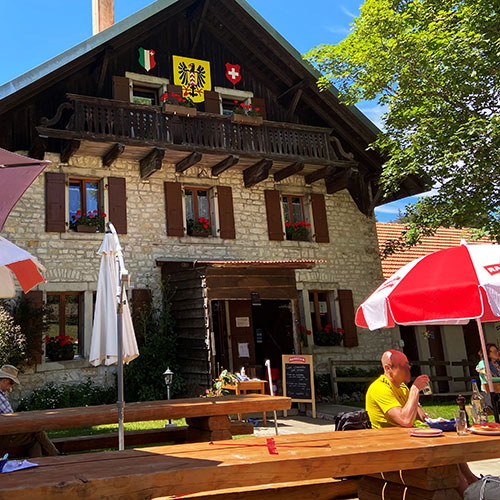 This day tour begins at Neuchâtel train station, where you take the local train to Noiraigue (direction Buttes). The train passes through the gorge of the Areuse River and you can already catch a glimpse of the Creux-du-Van. After twenty minutes you arrive at Noiraigue station from where you set off on foot (0:00).
This day tour begins at Neuchâtel train station, where you take the local train to Noiraigue (direction Buttes). The train passes through the gorge of the Areuse River and you can already catch a glimpse of the Creux-du-Van. After twenty minutes you arrive at Noiraigue station from where you set off on foot (0:00).
The place-name Noiraigue is composed of the words “nigra” and “aqua”, which means “black water”. In fact, the village is named after its river whose waters are dark with peat (they originate from the Vallée des Ponts, i.e. the Bied river that disappears into a sinkhole near Ponts-de-Martel). Just follow the river through the village and you will arrive at the spring after five minutes. From there, follow trail markers (red triangles) in the direction of Creux-du-Van (Soliat). At first, the trail leads up a gently slope until the first rest at the farm inn “Les Oeillons” (00:50). These farms – called “métairie” – where simple, good meals are served are typical of the Jura Mountains. Sometimes they also offer rustic accommodation for hikers (gîte rural). Then, you continue on the well-known trail of the 14 bends (sentier des 14 contours) which is rather steep, as there is a level difference of 700 m (2,300 ft). As compensation, the path climbs up through a beautiful mixed and spruce forest, already part of the nature reserve, where with a bit of luck you can spot roe or ibex (other inhabitants such as lynx or capercaillies are harder to detect). Once you have reached the crest, take a good break to admire the breathtaking view of the rock amphitheater and have a sandwich – if you can’t wait until you reach the Métairie du Soliat” (01:50). The next span leads up to Soliat (02:15), the highest point of the tour (1,463 m/4,800 ft). From there, you have several options. We recommend to descend on the other side of the rock cirque and take the “Chemin du Single” trail until Ferme Robert (03:15). From there, you can either walk directly to the Noiraigue train station (20 minutes) to take the train back to Neuchâtel or else follow the trail markers in direction of Champ du Moulin that lies on the railway line to Neuchâtel. The second tour takes you through the most beautiful part of the gorge of river Areuse with its scenic stone bridge.
The Canton of Neuchâtel is a real paradise for hikers, thanks to the rich variety of its landscape. So, you really should plan for a day of hiking right from the start. Recommendable tours, besides the one described above, lead to Chasseral summit, the mountain pass Vue des Alpes, the valley of river Doubs or to the Chaumont .
Romandy : relax... nature and culture for everybody

French is the second most spoken language in Switzerland, after German, in the cantons of Geneva, Vaud, Neuchâtel and Jura. The cantons of Fribourg, Valais and Bern are bilingual with the "Röschti border" between the two languages. Below, we present the most beautiful regions of French-speaking Switzerland and the places not to be missed. There is so much to marvel at that we recommend you to stay in two different regions, some days along the Jura and others on the Alpine side between Valais and Fribourg. Visit also our page on museums and the one on the cultural agenda and tourist sites. More tips are on the page information and hotel & restaurants.
If you are in a group with a few friends, your association or company, contact our partner for Switzerland, the Illico Travel agency, who can organize a customized trip including hotels, transportation and guide.
Photo: View on the Castle of Gruyère © swiss-image.ch/Ernst Christen

Organized travel in Romandy
Our partner for Switzerland Illico Travel offers guided tours of Swiss cities or can organize your group vacation in French-speaking Switzerland with the visit of the main tourist sites according to your needs. Please contact Gianna Loredan and her team, specifying your wishes, for a private guided tour or an organized trip.
Information & Reservations on the page "Guided City Tour"
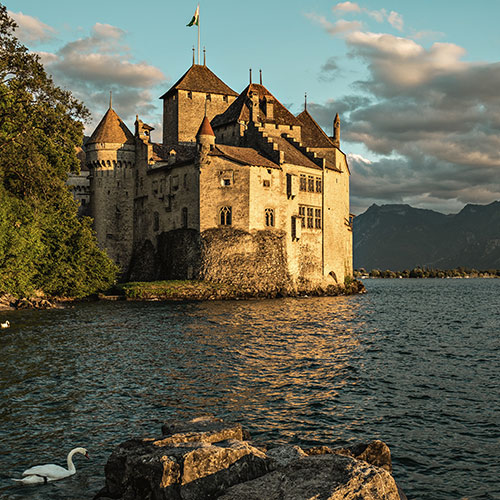
Chillon Castle and the Riviera
The Riviera region bears his name because of the excellent climate reminiscent of southern Europe. Between the beautiful cities of Montreux and Vevey, two tourist destinations await you; Le Lavaux, a wine region in the canton of Vaud known for its terraced vineyards on the shores of Lake Geneva, is a UNESCO World Heritage Site. On the Riviera you also have the most visited tourist site in Switzerland; The Castle of Chillon in Veytaux was occupied by the House of Savoy and then by the Bernese and was built on an island on the shores of Lake Geneva. Photo: © swiss-image.ch/Ivo Scholz
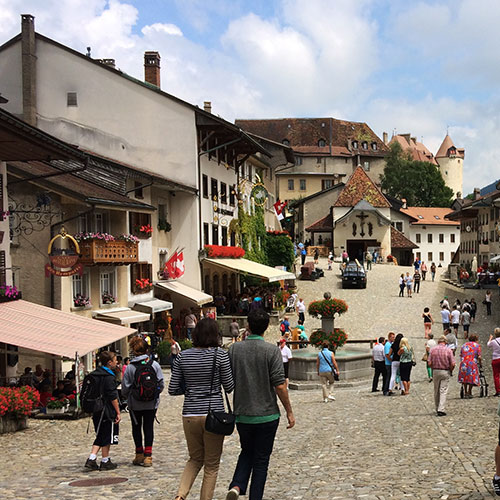
Gruyères & Moleson
You know its cheese, but Gruyères is also one of the most beautiful villages in Switzerland. It occupies a remarkable position on a rocky spur overlooking the Sarine valley. Its castle, its walls, churches and houses testify to the importance of this region in the Middle Ages. Visit the castle-museum but also the very surprising and contrasting HR Giger museum of the creator of the monsters from the movie Alien. We also recommend you to go up the Moléson mountain (funicular and cable car) or the "Maison du Gruyère" and taste the double cream or a fondue.
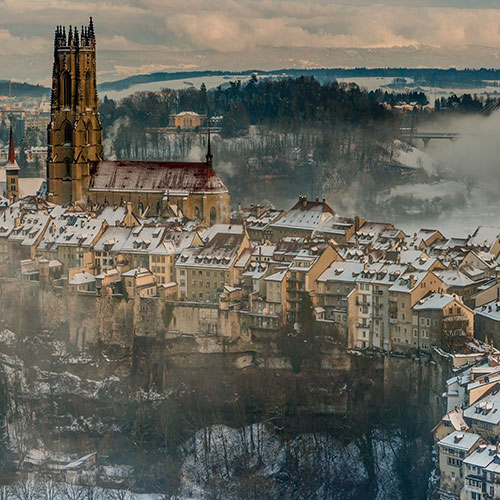
Canton of Fribourg
In the canton of Fribourg, an important agricultural region with beautiful scenery is worth a visit for Gruyère and our favorite, the small town of Murten on the lake that bears its name. It has largely preserved its original state and its ramparts still almost encircle the town. Very well located in the French-speaking part of Switzerland and ideal for a few nights. Visit also the ancient Roman city of Avenches and of course, Fribourg which has preserved a medieval complex unique in Europe of nearly two hundred buildings including the Cathedral of St. Nicholas. - Photo: © swiss-image.ch/Jan Geerk

Canton of Valais
The Valais, a valley where the Rhone River flows and its side valleys is a hiking paradise in fairytale landscapes. For a discovery in stages, stay in its capital Sion with its small streets and the hills of the Tourbillon castle and that of Valère. Our favorites for your vacations are the region of the Aletsch glacier, the Déborence valley (take the postal bus to get there, the road is partly in the middle of the cliff), the Zermatt valley with the Matterhorn of course, and there are beautiful hikes along the "Bisses". Taste the good wines of the Valais and its gastronomy. - Photo: © swiss-image.ch/Andreas Gerth
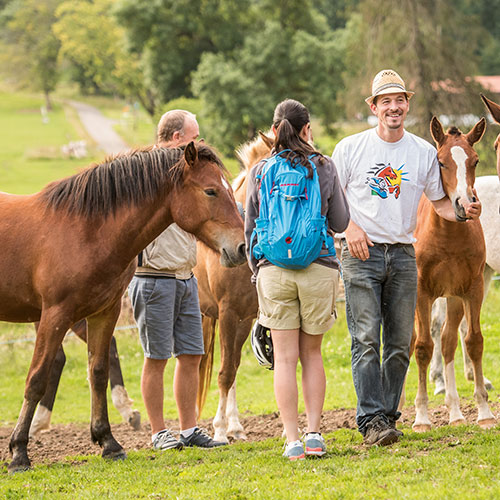
Canton of Jura
The Jura is the land of the horse with its own breed of horses and many activities related to horses are offered (1 hour on horseback free for 2 nights or more in the canton). A preserved nature, hilly landscapes with its small country villages, a paradise for all outdoor sports. We recommend Saignelégier (Café du Soleil for eating and sleeping) and the nearby pond (lake) of La Gruère (nature reserve for its peat bogs). Hiking along the river Doubs and the historic town of Saint-Ursanne will make your stay more enjoyable. - Photo: © swiss-image.ch/Andre Meier
German-speaking Switzerland : Between tradition and modernism
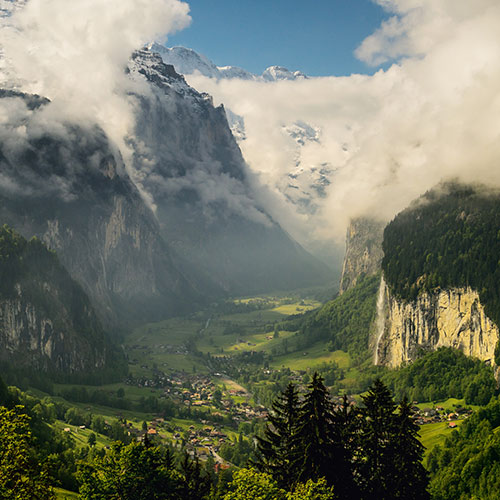
To make the most of your vacations in German-speaking Switzerland, the ideal would be to mix between the discovery of the most beautiful cities of Switzerland with Lucerne and Bern, a bit of hiking in one of the regions that we present you, and a more relaxed part with a trip by train like the Glacier Express, by boat on Lake Lucerne or enjoy the thermal baths offered in several mountain resorts. On a cultural level, a concert in Lucerne is a must, or opt for Swiss traditions, with a visit to a castle or the open-air museum in Ballenberg.
If you are in a group with a few friends, your association or company, contact our partner for Switzerland, the agency Illico Travel, who can organize a tailor-made travel including hotels, transportation and guide.
Photo: © swiss-image.ch/Jan Geerk

Package travel in German-speaking Switzerland
Our partner for Switzerland Illico Travel offers guided tours of Swiss cities or can organize your group trip in German-speaking Switzerland with visits to the main tourist sites according to your needs. Please contact Gianna Loredan and her team, specifying your wishes, for a private guided tour or an organized holiday.
Information & Reservations on the page "Guided City Tour"

Mountains in the heart of Switzerland
Apart from watches, cheese and chocolate, almost nothing is as often associated with our country as its unique mountains. In summer and winter alike, for hiking or skiing, Switzerland is a paradise for mountaineers and those who wish to become one. Visit the Website of switzerland tourism.
Accessible by cable car or on foot for hikers, we recommend : The PilatusPilatus (2118 m), the mountain that dominates Lucerne - The Tiltis (3062 m) at the foot of Engelberg has a revolving cable car and a suspension bridge at the summit - The Niesen (2362 m) is ideal for hikers with a 2h15 ascent (or 1h15 descent) from the middle station to the summit - The Schilthorn (2970 m) and its revolving restaurant. Photo: © swiss-image.ch/Urs Wyss
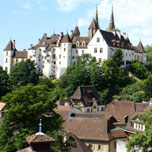
Switzerland and its Castles
Due to the tumultuous history of Switzerland with a large number of independent states gradually becoming members of the Swiss Confederation, you will find the best preserved castles in Europe. Most of them were built in the Middle Ages. Here you will find the most interesting ones. We recommend you to visit the Castle of Chillon, the most visited historical monument in Switzerland and the Castle of Grandson in the canton of Vaud. When visiting the Gruyère region, visit also its castle dating from the 13th century. In Sion (Valais) you have the fortified basilica of Valère, opposite the Castle of Tourbillon. In German-speaking Switzerland, the Berthoud Castle in Burgdorf (Berne), the castle of Lenzburg or the majestic castle of Thun, which is also a romantic castle-hotel, await you.

Switzerland and its traditions
Find a lot of general and practical information on customs and traditions in Switzerland on myswitzerland.com. We recommend you Ballenberg which is an open air museum, located in the Bernese Oberland, which presents 109 rural farms from all Swiss cantons with their traditions on a surface of 66 hectares. Switzerland is naturally the country of cheese and therefore of Alpine farms. During your hikes enjoy the excellent food and you can sleep there. Here a site for farm vacations. Photo: © swiss-image.ch / Jan Geerk

Switzerland by train
Switzerland is known for the quality and originality of its trains. Make the most of it with special offers over several days. The highest railway station in Europe is located at 3'454 m above sea level at the peak of the Jungfraujoch Mountain with an impressive view of Switzerland and the Aletsch Glacier. The Glacier Express is one of the most beautiful railways in the world and crosses the Swiss Alps. To be done in stages. Illico Travel will be able to inform you if you wish an organized trip. Photo: © swiss-image.ch/Andrea Badrutt

Canton of Bern
The Canton of Bern stretches from the French-speaking Jura to the highest mountains in Switzerland with the Jungfraujoch, a magical and varied landscape. The Jungfraujoch has Europe's highest railway station at 3454 meters above sea level. The most visited area is the region of the lakes of Thun and Brienz as well as the splendid wild valleys leading you to several summits accessible by cable car. By car, to get to the Valais take the Grimsel Pass, the massif is at the source of the Rhone and the Rhine with several glaciers. In the Bernese Pre-Alps region, discover the Emmental country with its bucolic hills. As far as culture is concerned, you will find international museums in Bern, the medieval fortified city in a bend of the river Aare in which good swimmers can swim.. Photo: © swiss-image.ch/Andreas Gerth
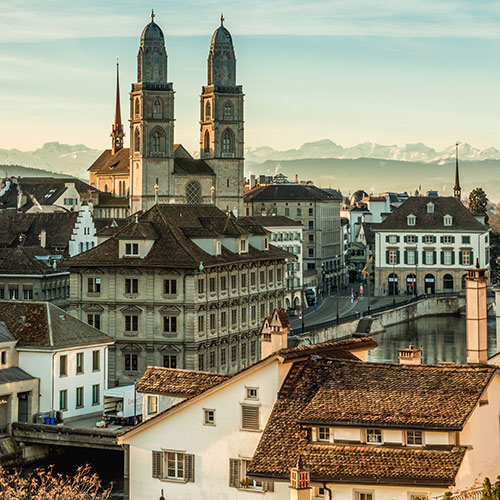
City of Zurich
Zurich, the economic capital of Switzerland, is the city on the banks of the river Limmat and its lake. Zurich offers a lot to discover, both for those who want to visit its history with the colorful Augustinergasse street near the Lindenhof park, an oasis of peace and a splendid view of the city. On the other side of the river Limmat is the popular district of Niederdorf with its restaurants, stores and backyards. Also visit (9-11am/2-4pm - Bahnhofquai 3) the most beautiful police station in the world painted by Augusto Giacometti. You can climb the Grossmünster, the most striking church tower in Zurich. For shopping, the Bahnhofstrasse is the world-famous shopping street. As a city of culture, we present you the must-see museums on this page and other cultural places here. Photo: © swiss-image.ch/Jan Geerk

Canton of Lucerne
With its many historical monuments and sights, Lucerne is one of the most beautiful cities in the world. Of course you will take the Lucerne landmark, the Chapel Bridge and its Water Tower, but you will also enjoy the picturesque historic center. On our culture page we present you the world famous Culture Center built by the Frenchman Jean Nouvel. One of the most beautiful regions of Switzerland is also the Lake Lucerne, you will appreciate it all the more during a cruise. Also spend a day in the Rigi mountain region with a rack railway that leaves from Vitznau (beautiful hiking area). Illico Travel can organize a day in the region with a private guided tour of the city of Lucerne. Photo: © Luzern Tourismus / Beat Brechbühl
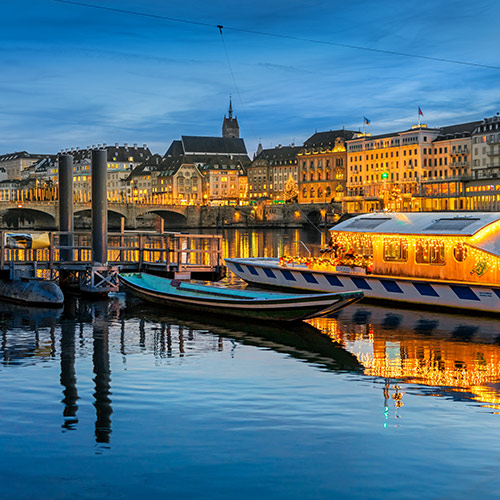
City of Basel
Basel is a city of contrasts, rich in tradition with its carnival and the richness of its 15th century buildings, but also contemporary with its buildings by internationally renowned architects. A harmonious whole with the Rhine as a vital artery that you can cross with a boat, without noise and by the force of the current alone. The Rhine city enjoys a Mediterranean climate, and this can be felt in summer along the river. It is no coincidence that Basel has 40 museums that we are presenting to you. The people of Basel are great art lovers. For young Swiss, Basel is of course its zoo, the oldest in Switzerland. With a hotel in Basel, you will have free access to public transport and discounts in the museums. Photo: © Basel Tourismus
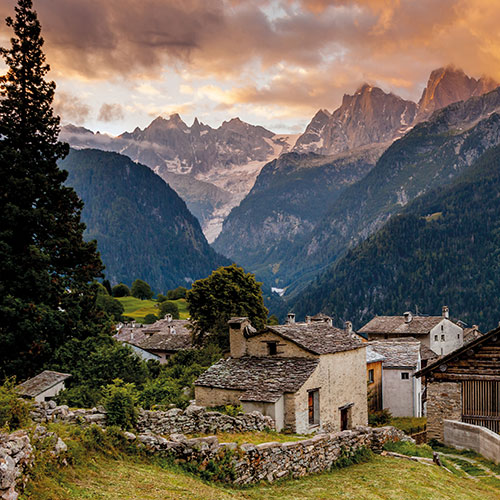
Canton of Graubünden
In Switzerland, you will find four language regions, German-speaking Switzerland, French-speaking Switzerland and Italian-speaking Ticino, and it is in the canton of Graubünden with Chur as its capital that you will hear Romansh, a Romansh language spoken by 60'000 people. Situated in the middle of the Alps, Graubünden is a paradise for those seeking nature with a capital N. You can hike in the impressive National ParkNational Park and to relax, thermal baths await you, including the one in the Vals Valley. The villages are picturesque and you will spend a beautiful and relaxing vacation in this region. - Photo: © swiss-image.ch / Jan Geerk

Canton of Ticino
For a small country like Switzerland, so many contrasts between the regions, and to finish our presentation, here is the Italian-speaking canton of Ticino, with absolutely fabulous landscapes, below, the lake of Lugano and the major lake located mostly in Italy where you will experience the Mediterranean atmosphere and not only for its vegetation like its palm trees, then you have in contrast, the snow-covered mountains. What a beauty! Linking the two, from wild valleys to bucolic rivers. Visit the website of the Ticino Tourist Office to find many ideas for your vacations in Ticino. Photo: © swiss-image.ch / Jan Geerk











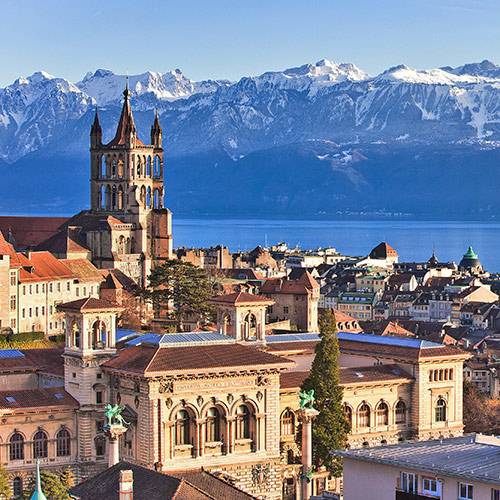












 This day tour begins at Neuchâtel train station, where you take the local train to Noiraigue (direction Buttes). The train passes through the gorge of the Areuse River and you can already catch a glimpse of the Creux-du-Van. After twenty minutes you arrive at Noiraigue station from where you set off on foot (0:00).
This day tour begins at Neuchâtel train station, where you take the local train to Noiraigue (direction Buttes). The train passes through the gorge of the Areuse River and you can already catch a glimpse of the Creux-du-Van. After twenty minutes you arrive at Noiraigue station from where you set off on foot (0:00).





